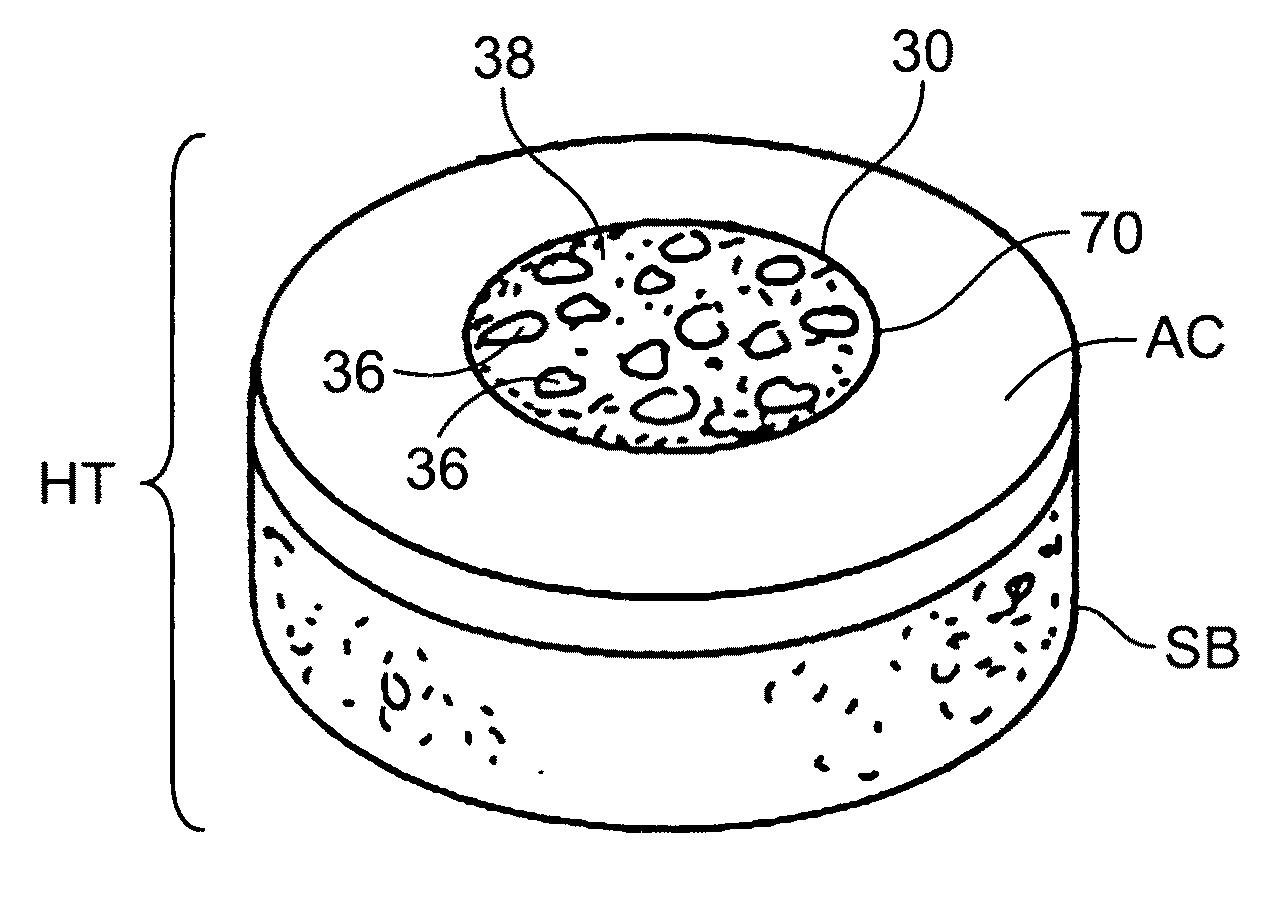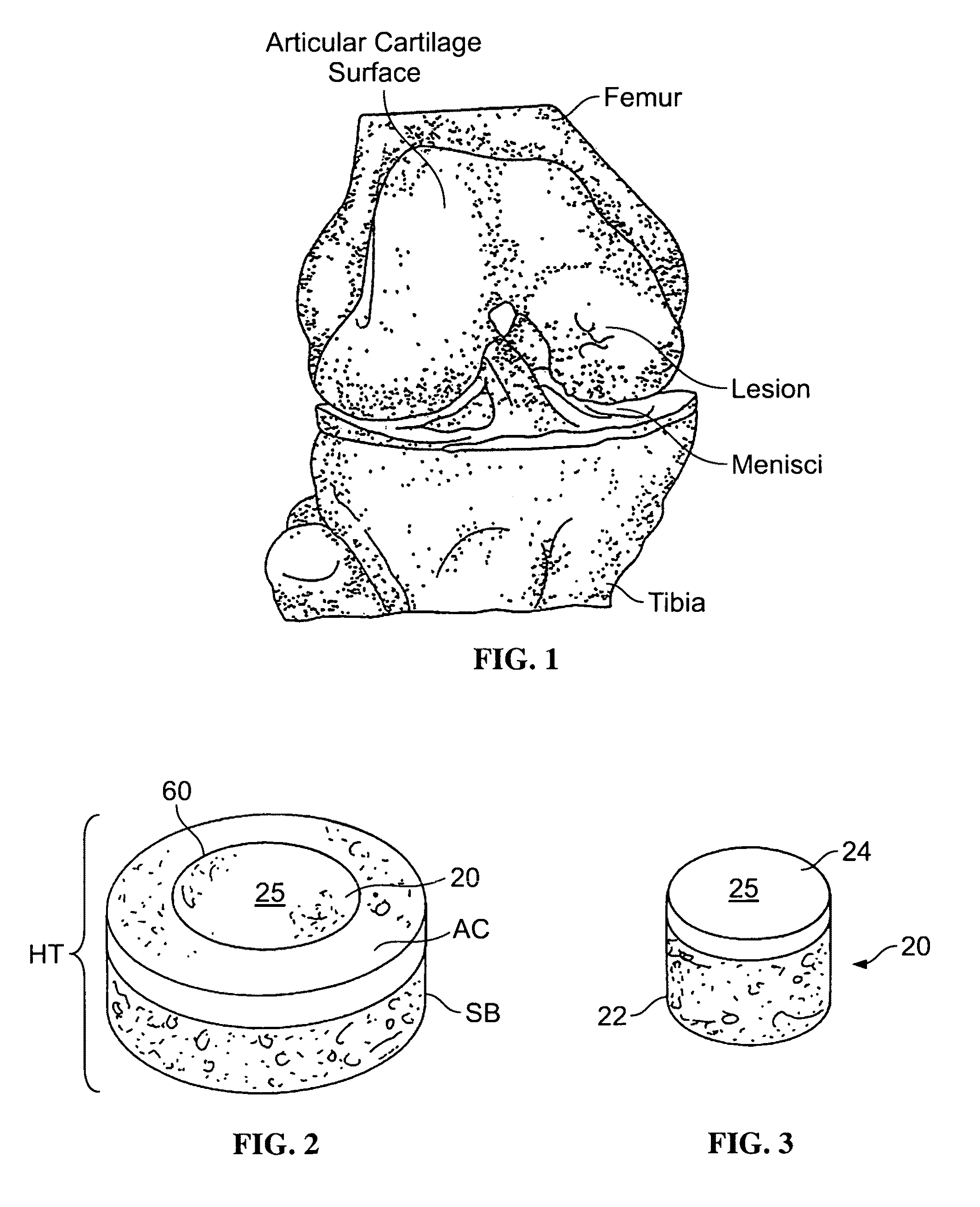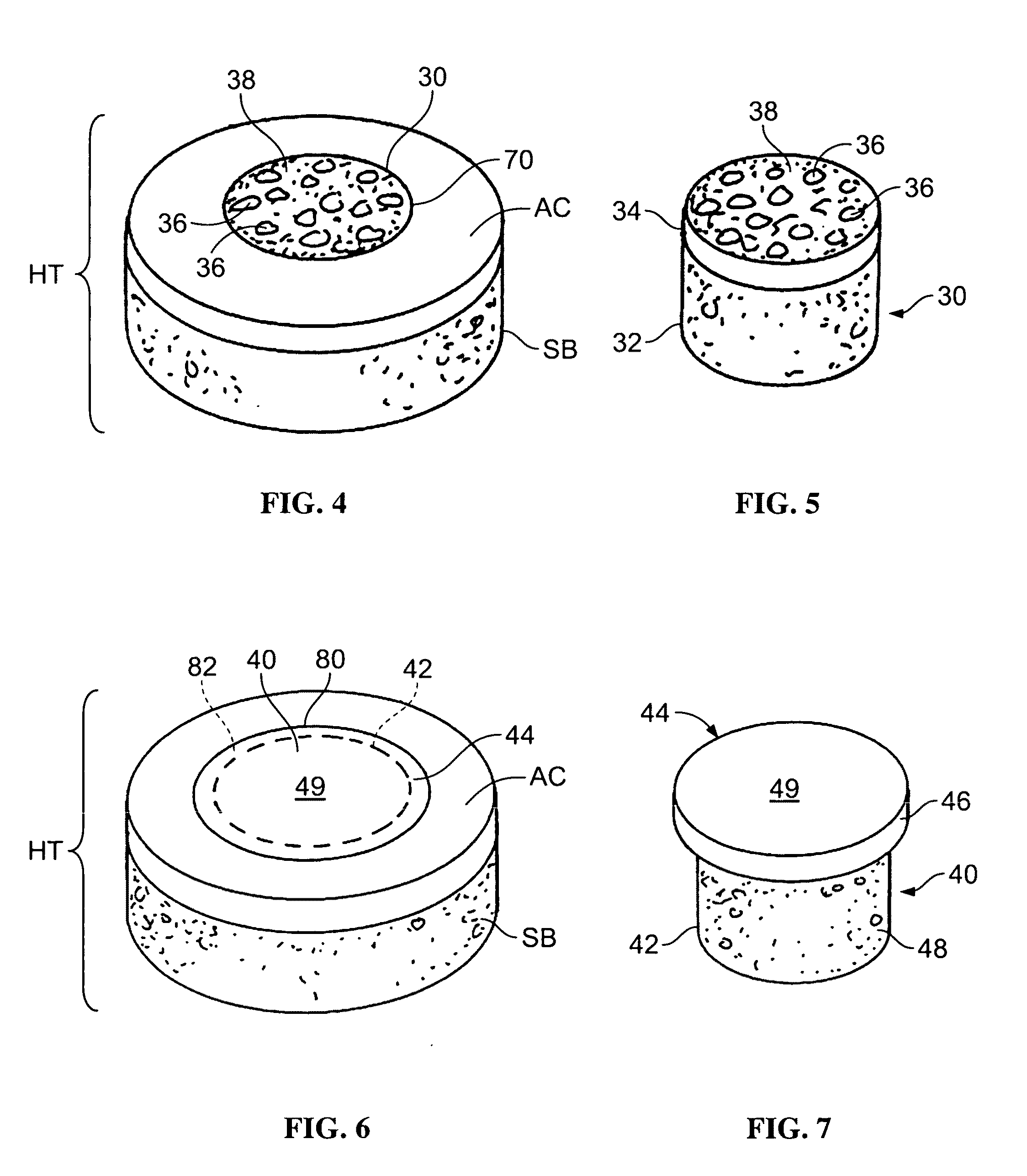Allograft osteochondral plug combined with cartilage particle mixture
a cartilage particle and osteochondral plug technology, applied in the direction of biocide, peptide/protein ingredients, prosthesis, etc., can solve the problems of articular cartilage lesions, general non-healing or healing, pain in joint movement or severe restriction, etc., to promote cartilage cell migration into and proliferation, and enhance tissue integration , the effect of increasing chondrocyte (and/or other cellular) migration
- Summary
- Abstract
- Description
- Claims
- Application Information
AI Technical Summary
Benefits of technology
Problems solved by technology
Method used
Image
Examples
example 1
Complete Interference-Fit Osteochondral Plug
[0114]A non-viable or decellularized osteochondral plug including a subchondral bone base and an overlying cartilage cap, according to one of the embodiments disclosed herein and illustrated in FIGS. 2-9, was treated with a solution or variety of solutions such as hyaluronidase (type IV-S), trypsin and a chloroform / methanol solution to remove the cellular debris and the proteoglycans, as noted in the treatment described above. It is believed that this removal provides signaling to stimulate the surrounding chondrocytes to proliferate and form new proteoglycans and other factors producing new cartilage matrix. The plug is then subjected to an antibiotic soak and milled to a desired configuration (e.g., as illustrated in FIG. 3, 5, 7 or 9) to have an interference fit with the blind bore to be cut in the patient's tissue.
example 2
Partial Interference-Fit Osteochondral Plug
[0115]A non-viable or decellularized osteochondral plug including a subchondral cylindrical bone base and an overlying smaller diameter cylindrical cartilage cap cut from the original plug, according to one of the embodiments disclosed herein and illustrated in FIGS. 10-13, was treated with a solution or variety of solutions such as hyaluronidase (type IV-S), trypsin and a chloroform / methanol solution to remove the cellular debris as well as the proteoglycans, as noted in the treatment described above. It is believed that this removal provides signaling to stimulate the surrounding chondrocytes to proliferate and form new proteoglycans and other factors producing new matrix. The plug is then subjected to an antibiotic soak and milled to a desired configuration (e.g., as illustrated in FIG. 11, 12 or 13) so that the subchondral bone portion will have an interference fit with the blind bore to be cut in the patient's tissue.
example 3
Tissue Extraction and Particularization
[0116]A process of cartilage particle extraction may be applied to any of a number of different soft tissue types (for example, meniscus tissue). In one embodiment, cartilage is recovered from deceased human donors, and the tissue is treated with a soft tissue process.
[0117]Fresh articular cartilage is removed from a donor using a scalpel, taking care to remove the cartilage so that the full thickness of the cartilage is intact (excluding any bone). Removed cartilage is then packaged in double kapak bags for storage until ready to conduct chemical cleaning of the allograft tissue. In one example, the cartilage can be stored in the refrigerator for 24-72 hours or in the freezer (e.g., at a temperature of −70° C.) for longer-term storage.
[0118]Chemical cleaning of cartilage tissue is then conducted according to methods known by those skilled in the art. Subsequent to chemical cleaning, the cartilage is lyophilized, so as to reduce the water conte...
PUM
| Property | Measurement | Unit |
|---|---|---|
| Length | aaaaa | aaaaa |
| Length | aaaaa | aaaaa |
| Length | aaaaa | aaaaa |
Abstract
Description
Claims
Application Information
 Login to View More
Login to View More - R&D
- Intellectual Property
- Life Sciences
- Materials
- Tech Scout
- Unparalleled Data Quality
- Higher Quality Content
- 60% Fewer Hallucinations
Browse by: Latest US Patents, China's latest patents, Technical Efficacy Thesaurus, Application Domain, Technology Topic, Popular Technical Reports.
© 2025 PatSnap. All rights reserved.Legal|Privacy policy|Modern Slavery Act Transparency Statement|Sitemap|About US| Contact US: help@patsnap.com



